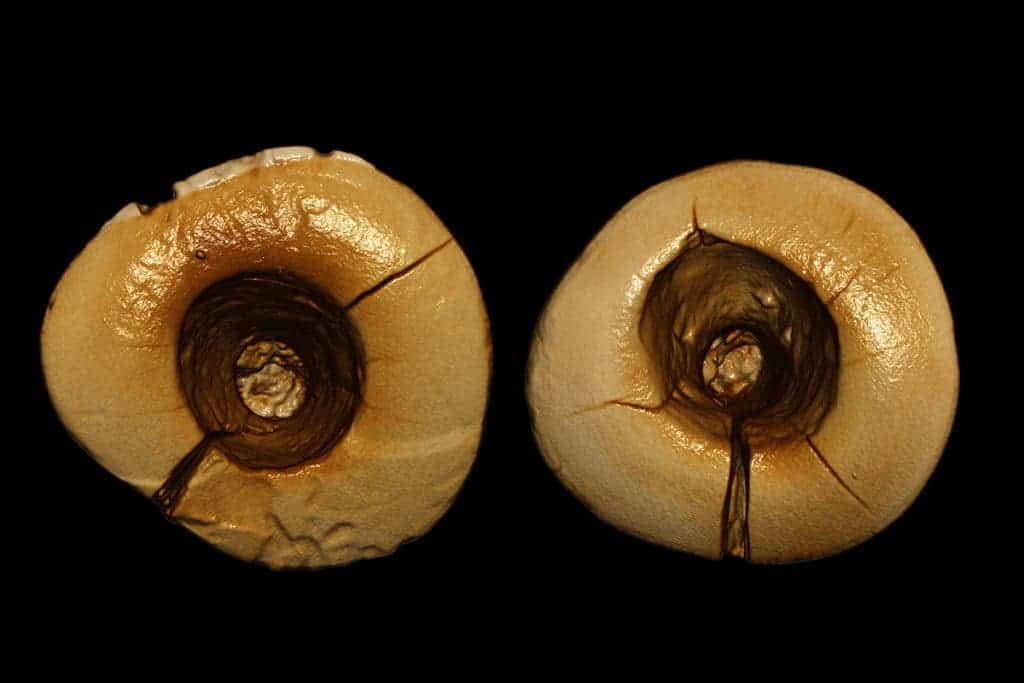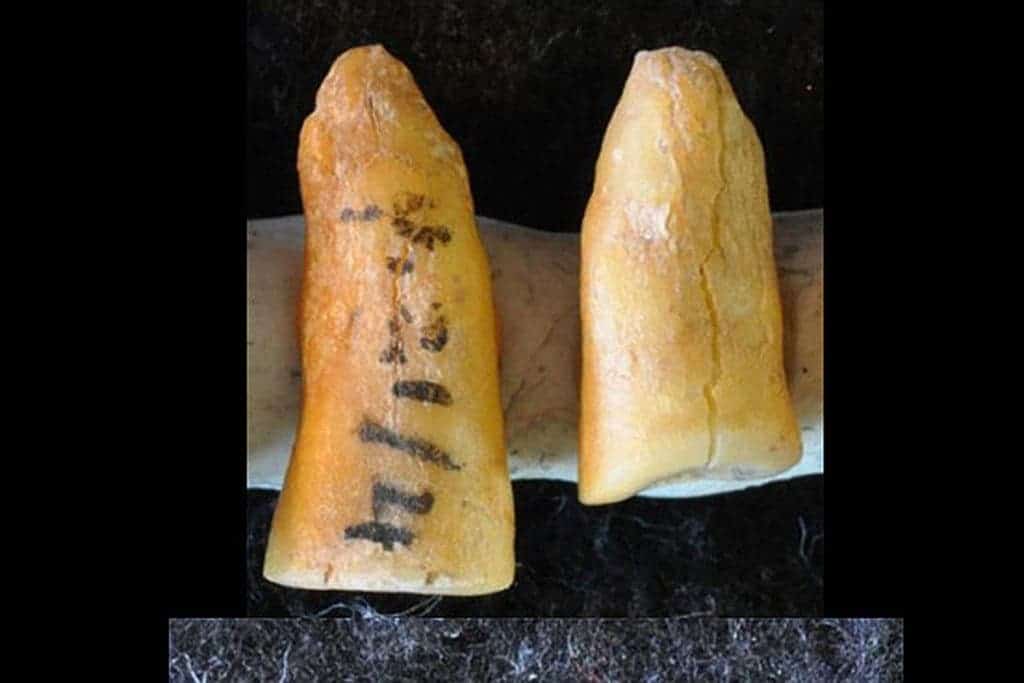People have been going to the dentist for a much longer time than you’d believe. Archaeologists working in northern Italy have found the oldest known dental fillings. They were made from a mix of bitumen, hairs, and plants some 13,000 years ago.

There’s no such thing as a good toothache. That’s why we have dentists, and that seems to have been the case in the stone age, too — although I hear conditions weren’t as good back in the day. Faced with a lack of materials, tools, or you know, any sort of body of literature to guide their steps, ancient dentists had to be creative (they invented a lot of stuff back then). A pair of 13,000-year-old front teeth found in Italy stands testament to what they could achieve with a bunch of stones and bitumen.
Asphalt teeth
The teeth were discovered in the Riparo Fredian site near Lucca, northern Italy. Each one has a large cavity going from the surface all the way through to the pulp. They were probably hollowed out and enlarged with stone tools, judging by microscopic etches and markings on their walls. While poking though these holes, a research team lead by Gregorio Oxilia from the University of Bologna has found residues of bitumen with plant fibers and hairs mixed in. Although very different from what you’d see in today’s fillings, their purpose was probably the same — keep stuff away from the pulp and keep pain to a minimum.
“It is quite unusual, not something you see in normal teeth,” Stephano Benazzi, an archaeologist at the University of Bologna and corresponding author of the paper told New Scientist.
Benazzi noted that the etchings found in these teeth are similar to another set him and the team found in Italy in previous research. That set of teeth was dated as 14,000 years old, the oldest known evidence of dentistry we’ve ever seen. But this is the (new) first time we know of fillings being used.

It’s probable that the Paleolithic dentist drilled out the cavities and then filled them in — just like his modern counterparts would do. However, he only had tiny stone tools to drill with, probably no anesthetics, and bitumen to use for the fill. The team is unsure as to why the hairs and plant fibers were added to the mix (they did rule out the possibility of them being remains of food since they were added to the area after drilling). One theory is that the plants were chosen for their antiseptic properties, helping to keep the cavity healthy and clean of bacteria. Or the dentists thought fibers would help fix the filling. We don’t yet know.
What’s really striking is the time-frame of the fillings. They’re evidence of relatively advanced knowledge being put to use in fixing an ailment thousands of years before we though they’d become a significant affliction — the change in diet agriculture brought on is thought to have lead to a dramatic increase in cavities. Still, at this time Europe was seeing a lot of people migrating in from the near East, Benazzi adds. The foods they introduced to the continent may have led to more cavities, and then to dentistry.
The full paper “The dawn of dentistry in the late upper Paleolithic: An early case of pathological intervention at Riparo Fredian” was published in the American Journal of Physical Anthropology.






